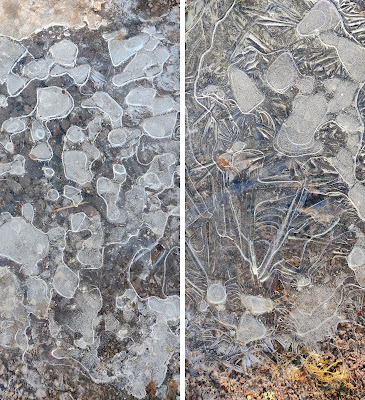In the absence of plants flowering, I have been investigating lichens and fungi. However, the BSBI have a New Year Plant Hunt which runs from 30 December to 2 January. There is lots of information and ID guides here to get you going. It's not just fun, it contributes to some research for the dates on which plants flower.
I must admit, as I live in a rather cold part of the country, the flowering plants at New Year are very few, but you might have more in your area.
I found an interesting Hazel twig last month. I don't see much Hazel locally, so I was pleased to find it as it had a lichen species on it that I had not found before. Here's the twig:
 |
| Hazel twig |
I know, it might not look that interesting, but wait and see..
First of all, just look at it in UV light. Some lichens glow bright orange, and some dull orange and some don't change at all
The new lichen for me was one called
Arthonia radiata which is covered in tiny black star shapes. These are the fruiting bodies that make spores.
One of the other lichens had the usual "jam tart" fruits but they had black spots on them.
I put one of the black spots under the microscope and this is what I saw:
I have made the photo quite big, but the black spots were tiny, about a tenth of a millimetre or 100 microns. Those little sausage shapes emerging from the hole are a kind of spore, called conidia. They are asexual spores - meaning they haven't got together with any other spores to swap DNA. As you can see there are a lot of them! The black spots are a lichenicolous fungus, which just means that it is a fungus that likes to grow on a lichen. For those that want to know, I think the lichen is Lecanora hybocarpa and the lichenicolous fungus (LF for short) is Vouauxiella ( that's a lot of vowels in a row!) lichenicola.
As life would have it, the next fungus I looked at was also producing conidia. This fungus was not a lichen, not even growing on a lichen, but on a dead birch stump.
The really abundant fungus is Turkey Tail, but the one I took home was a purple one on the left of this picture.
 |
Purple jelly fungus (on the left)
When I squished a bit on a microscope slide, what did I see but ....  |
...lots and lots of tiny conidia
A bit like buses... nothing comes along and then....









































